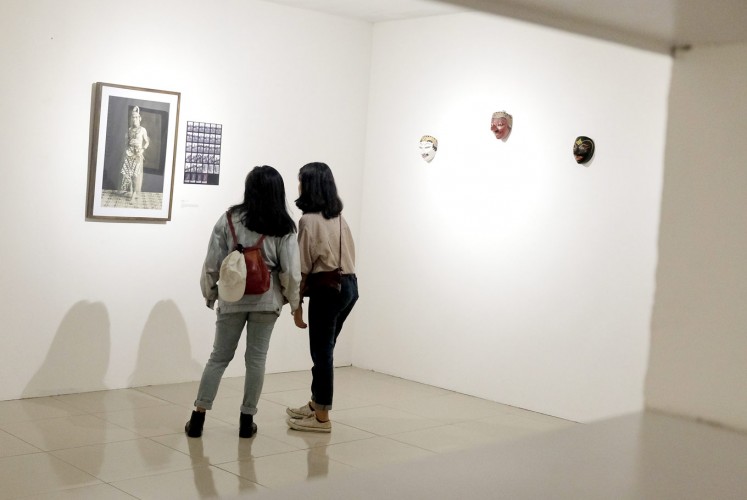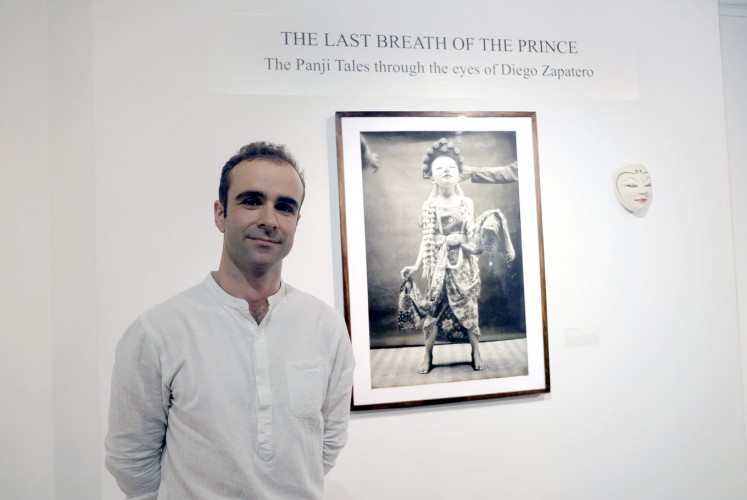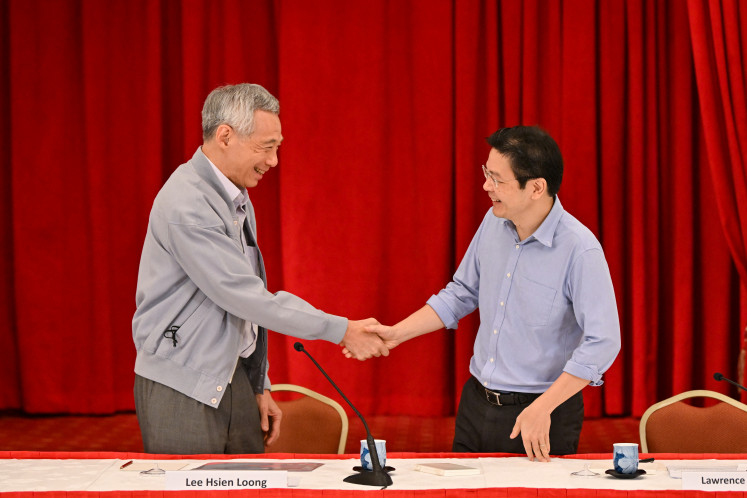A Javanese prince seen through a Spanish lens
A spanish photographer finds himself captivated by Panji.
Change Size
 The legendary tales of Panji have long influenced a wide range of Indonesian cultural expressions from their conception in the 13th century. (JP/Jerry Adiguna)
The legendary tales of Panji have long influenced a wide range of Indonesian cultural expressions from their conception in the 13th century. (JP/Jerry Adiguna)
T
he legendary tales of Panji have long influenced a wide range of Indonesian cultural expressions from their conception in the 13th century.
The love story for the ages describes the prince’s steadfast yearning for his one true love Princess Chandra Kirana, despite the gods and demons that stand in his way.
From the East Javanese art of wayang gedog (masked shadow puppetry) to the topeng dance of Cirebon and Malang, Panji’s influence has spread as far as Thailand and Cambodia.
In 2017, the manuscripts of the Panji tales were inscribed in UNESCO’s Memory of the World Register, further cementing their status as well as helping them to step out of the shadows of the Indian epics Mahabharata and Ramayana that preceded it.
While Panji’s influence can be observed in traditional dance or wayang puppetry, an exhibition titled The Last Breath of the Prince set out to portray the legend using a different medium: photography.
The Last Breath of the Prince showcases the work of Spanish photographer Diego Zapatero, who explored the art of wayang topeng during his time in Yogyakarta.
The exhibition features 18 photographs of masked dancers in a variety of scenes, along with 11 illustrations of masks and six miniature images from the Dutch colonial photo archives that serve as Diego’s inspiration.

Special techniques were used to make the photographs look old, unlike the faux-vintage filters one can easily apply using a phone.
The 36-year-old has lived in Yogyakarta since 2010, after a two-month mission covering the eruption of Mount Merapi.
Before enrolling in the Indonesian Institute of Arts to study photojournalism and documentary photography, Diego had a stint in marketing and business administration, as well as a background as a pianist and composer.
Diego first discovered the tales of Panji after he received a Darmasiswa scholarship to study Indonesian culture in 2010, subsequently falling in love with the culture, even becoming proficient in the Javanese language as well as Indonesian.
“[The Panji tales] are unique, different from the Indian Mahabharata and Ramayana. They are real Javanese tales [...] and also because they are performed with masks, so they are really amazing,” Diego said.
Before jumping into the surviving communities in Yogyakarta, Diego first researched the Panji tales at Leiden University, which houses around 250 manuscripts of the legendary folklore, in the Netherlands.
Also present in the exhibition is a series of behind-the-scenes photographs showing Mbah Sugi, an 82-year-old dancer and actor directing the crew, who Diego noted was suspicious of them in the beginning.
He recalled that after Mbah Sugi was assigned to be the director of the project, the freedom to create the scenes seemed to make the old man happy and enthusiastic like in older times.
“That was a very intense moment for me, and maybe one of the aims of the project was just that.”
Along with photographs and illustrations, six masks made in Yogyakarta from Diego’s personal collection are also displayed at several points in the gallery.
“I had already seen exhibitions of masks before, as a material thing, as a souvenir. But I thought why not pay tribute to those who are behind them?” he said.
“It is a universal issue: a performer loses his previous identity and assumes a new one, letting go of his own will, which now becomes subservient to that of the personage of the mask.”

While the majority of the photographs depict scenes from the Panji tales, one picture in particular seems to differ.
Titled Pak Pono the Mask-Maker, it depicts the eponymous Pak Pono in costume as the archenemy of Panji, the evil King Prabu Klono, while holding one of his creations.
The description of the photo notes that Pak Pono is one of the last carving masters of the topeng [mask] art in Yogyakarta, who is also an expert choreographer and dance teacher continuing the family tradition from his grandfather.
Fittingly, a description written on a wall in the gallery states that “when a master of a craft or the keeper of the knowledge is gone, there is nothing but material traces and vague memories left behind, crumbling away with time”.
However, Diego feels that he is not in a position to say anything to Indonesians who might not know their own cultural heritage.
“I can say nothing because I am a Spaniard and I am not interested in Spanish culture, so maybe it is normal that you are interested in something exotic,” Diego said with a laugh, noting that Indonesian culture is beautiful and should be preserved.
_________________________
The Last Breath of the Prince runs from July 6 to 15 at the National Gallery of Indonesia, Central Jakarta, and is part of the 60th anniversary of diplomatic relations between Indonesia and Spain.









